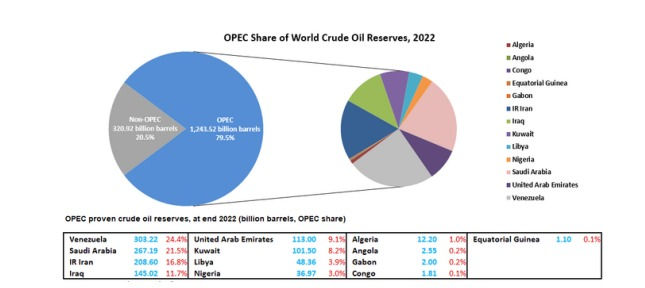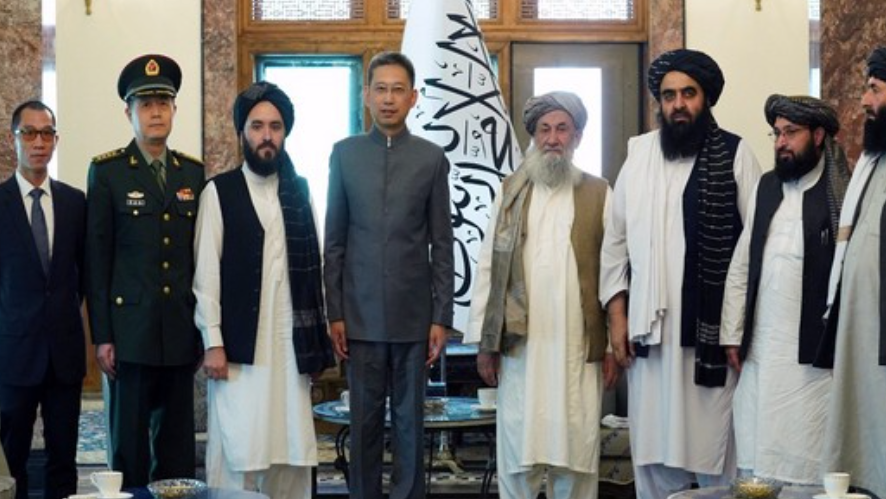Roadmap for a life under water or above it?
- SIS Blog

- Dec 30, 2023
- 5 min read

By Dr. Surajit Mahalanobis
The meeting of the OPEC Secretary General Dr Haitham Al Ghais with the youth in Doha after the COP 28 summit declaration is significant as an aftermath development of the international call for restraining fossil fuels use in development activities. Dr Ghais has called for rejection of any language that targets fossil fuels and not the emissions. Indeed, the OPEC wants that the emission of the greenhouse gases (GHGs) be addressed for worldwide solution, without targeting the production and use of fossil fuels, though these are the sources of the most GHGs. Way back in 2000, at the Caracas conference, the OPEC Summit had already included the environment pollution issues out of the production from fossil fuels in the charter of the OPEC. That has since been in force ardently by the producers. The Arab producers have wasted no time after the Framework Convention of Climate Change’s 28th meeting (COP28) at Dubai that ended on 12 th December last, to speed up their outreach to stress the point that climate change needs to be addressed and not the fossil fuels. This was rather an expected aftermath, considering the fact that world’s 79.5 percent petroleum crude reserves are held by the Organization of the Petroleum Exporting Countries (OPEC) to which Arab producers are the 67.2 percent contributors. Total West Asian region reserves amount to be 48.3 percent of the entire world reserves. Following 2022 chart (below) of the OPEC explains the minute details:

The world’s economy runs on the fossil fuel, an unavoidable reality that stormed the world communities from Stockholm in 1972 to the COP28 at Dubai in 2023. The elephant was always there, but seldom taken head on, until now. Even now the formidable task remains inaccessible. The COP28 Declaration believes the 1.5ºC goal of the Paris Convention 2015 by mitigation, adaptation, and financing are doable. It would be incorrect to think that the move out of the dominating concern is just what the Arab producers of the petroleum crude started alone. In moral support to them are also likely to be the countries enjoying huge fossil fuels reserves, which they profusely use to build up their economies world over. Indeed, it is possible, if only the countries with abundant fossil fuel reserves had options to do away from using them. It is not the petroleum crude alone which is the bone of contention, that the Arab producers of crude oil and also many observers would find out, there are huge reserves of coal and coal-based gases in large countries like the USA, Russia, China, India, Australia, and others, which are used as the principal fuel to generation of domestic electricity. Over 90 percent world’s proven coal reserves are located in twelve countries, USA (22.3%), Russia (15.5%), Australia (14%), China (13.1%), India (9.5%), Germany (3.5%), Ukraine (3.3%), South Africa (3.1%), Poland (2.5%), Kazakhstan (2.5%), Indonesia (2.2%) and Turkey (1.1%) of total world reserves.
Phasing out the use of these reserves is not an easy proposition. Besides the supply chain practices, development and maintenance, the reality that the sectors using the fossil fuels are creators of the most jobs world over, thus sustain most people’s livelihood. Therefore, the tension of targeting the fossil fuels is unmitigable. Top of it, anything we dig out from the Mother Earth would create greenhouse gasses (GHGs). There is no escape from it. How then the world should address the climate change issues? The argument proffered by the concerned producers of the petroleum crudes for oils and gasses, and the tacit concern of the world’s coal-bed owning countries to look at the climate change and not at the fossil fuels is futile, because the argument ignores the inherent connect of the two basics: fossil fuels and climate change challenge. What is more important is the fact that manufacturing of new machines in development of novel technologies, that would ensure less production of the GHGs, would again use fossil fuel energies, because the alternatives are not adequate to meet the necessity. Will this necessity mother the new inventions in technologies, is anther queer question dogging the humanity today? International politics apart, for now, the COP28 has four options to speed up the processes of development of alternatives to the fossil fuels: energy generation from Hydro, Solar, Wind and Biofuel sources. Naturally emerges the understanding how much progress have the world leaders been able to trigger for successful efforts in these domains, since the Stockholm promises? Connected with this question is the more dormant one: How much are the national budget financing effectively done for these efforts for transition to the alternatives in member countries? Let us not forget the transition which is being thrust rather too much in this COP, was already advocated in the Stockholm Conference way back in 1972.
The GHGs are creating global warming, hence the melting of the icebergs is a natural fall out. With this the rise in water in oceans, seas and rivers is a natural consequence. The COP28 needs 3 to finance as a priority national budget expenditure in all countries for hydroelectricity generation by arresting the surplus water outflow. More and more dams in almost all countries are necessary, sustainably, without causing water crises to neighbouring countries for food production in fields. With these also possible are tidal wave arresting for electricity generation and passing them into the grids of the respective countries for use as alternative power to that created by burning the fossil fuels. International Solar Association (ISA) launched in 2015, considered to be a prospective formidable agency for alternatives to wean away dependence on the fossil fuels, is dogged by challenges, if not already proved an expensive damp squib. The ISA already could have started yeomen’s services to emerge as a formidable alternative to share the transition requirement from the world’s current consumption necessity of petroleum crude of 104 billion barrels a day, which could have been emerged as formidable effort to stop their use.
The ISA aims to institute a forum for “an exchange of experiences” for developing sustainable energy technology, which however is dogged because of the absence of adequate funding by countries. The international conferences come and go, the problems remain realistically unaddressed. The ISA was formulated with this goal in its objectives that the conferences and meetings would ensue real-time fruitful action for stopping the GHGs emission, yet it too fails like other COPs. The business models are differed, with political one upmanship in practice not the objectives are tried. The difference of business models can be removed only by developing the clarity about them for all to understand and well explicated. So far, the ISA is experiencing staggard progress toward the objectives. The world affected by global warming wants to know when exactly the COPS’ agreements would fructify in real time successful mitigation of the GHGs, This world also looks forward to seeing the financing enough to save their humanity from drowning.
Originally Published : 20th December' 2023
Posted in SIS Blog with the Authorisation of the Author
Dr. Surajit Mahalanobis is an Alumni of the School of International Studies (SIS), Jawaharlal Nehru University, New Delhi, India. He earned his PhD degree from the Centre for West Asian Studies, SIS, JNU, India.







